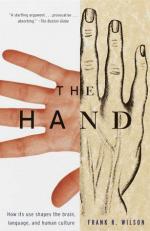
|
| Name: _________________________ | Period: ___________________ |
This test consists of 15 multiple choice questions and 5 short answer questions.
Multiple Choice Questions
1. Who is the author of Awareness Through Movement?
(a) It was an anonymous publication.
(b) Moshe Feldenkrais.
(c) Jonathon Fleishman.
(d) Frank Wilson.
2. What does Jack Schaefer do?
(a) Builds homes.
(b) Designs engines.
(c) Is a photographer.
(d) Operates a frame shop.
3. What does Wilson say is not genetic?
(a) The ability to sing.
(b) The ability to hear tone.
(c) Musical talent.
(d) The ability to learn languages.
4. How is the dominant hand theoretically controlled?
(a) Use.
(b) The number of nerve endings in each hand.
(c) They have no concrete evidence as to how it's determined.
(d) Genes.
5. What distinguishes a proficient surgeon from a mediocre one?
(a) Where one trains.
(b) I. Q
(c) Analysis and perceptual organization.
(d) Manual dexterity.
6. How do physicians get patients to take their medicines and follow instructions?
(a) Threatening them.
(b) Encouragement or charm.
(c) They have no way to do so.
(d) Giving the instructions to a loved one to supervise.
7. What type of intelligence does Patricia Greenfield study?
(a) Patricia Greenfield studies human intelligence as it unfolds in adult behavior over twenty year.s
(b) Physiological intelligence.
(c) Coordination intelligence.
(d) Patricia Greenfield studies human intelligence as it unfolds in child behavior twenty years earlier.
8. What is BachTur?
(a) The way music stimulates the parts of the brain the deal with language.
(b) The way music enables speech.
(c) There is no such term.
(d) The musical equivalent of ChomTur.
9. How many levels does the continuum of communicative movements have?
(a) 6.
(b) 4.
(c) 1.
(d) 3.
10. What does the Israeli physicist discover?
(a) Certain movements can lead a person with practice to move more smoothly and efficiently.
(b) Quarks are not in this dimension.
(c) Some movements are mimicked on the micro level.
(d) Quarks move faster when someone thinks about their doing so.
11. What do Haeckel, Reynolds and Dunbar confirm?
(a) Children become improvisers before they can even talk.
(b) Apes and children have a very different evolutionary process from about six months on.
(c) Children become problem solvers even before they can talk.
(d) Aspects of the evolutionary process perceived in Greenfield's theory.
12. With whom does the University of New Mexico perform a study about communicative movements?
(a) Gallaudet University.
(b) Stanford University.
(c) Harvard.
(d) UCLA.
13. What often dictates which hand is dominate?
(a) The baby deciding to use one or the other more often.
(b) The smaller of the two hands tends to be dominent.
(c) Social pressures.
(d) The larger of the two hands tends to be dominent.
14. What does Peter Reynolds spend years doing in New Guinea?
(a) Studying the ancient artifacts of the extinct culture.
(b) Observing chimpanzees.
(c) Observing gorillas.
(d) Observing young baboons.
15. To what do writing and drawing relate?
(a) Many other skills using small tools.
(b) Thinking.
(c) Touch and sight.
(d) Seeing and hearing.
Short Answer Questions
1. Who is an Israeli physicist mentioned in this chapter?
2. What can both humans and primates make?
3. How many Feldenkrais sessions does it take to effect a change in a woman with torsion dystonia?
4. What did ground mammals eat at this time?
5. How does Greenfield say she knows how a child will solve Greenfield's stick puzzle?
|
This section contains 526 words (approx. 2 pages at 300 words per page) |

|




